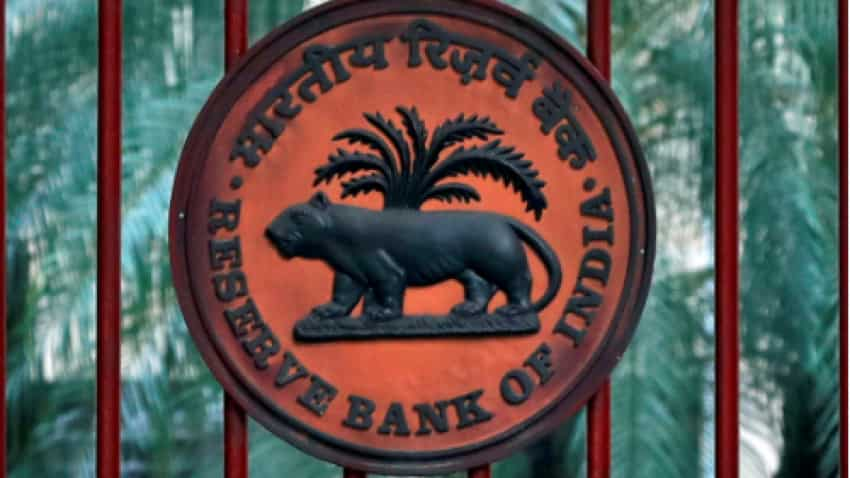Banks GNPA may rise over 22-yr high of 13.5 pc by Sep 2021: RBI FSR
Banks' gross non-performing assets may rise to 13.5 per cent by September 2021, from 7.5 per cent in September 2020 under the baseline scenario, according to Financial Stability Report (FSR) released by the Reserve Bank of India

Banks' gross non-performing assets may rise to 13.5 per cent by September 2021, from 7.5 per cent in September 2020 under the baseline scenario, according to Financial Stability Report (FSR) released by the Reserve Bank of India. The bank-level NPA had touched 14.7 per cent in 1998-99.
If the macroeconomic environment worsens into a severe stress scenario, the GNPA ratio may escalate to 14.8 per cent, the report said. In this case, the GNPAs would be at over 24-year high. In the fiscal ended March 1997, it was 15.7 per cent.
See Zee Business Live TV Streaming Below:
"The stress tests indicate that the GNPA ratio of all scheduled commercial banks (SCBs) may increase from 7.5 per cent in September 2020 to 13.5 per cent by September 2021 under the baseline scenario," the FSR report added.
Banks GNPA and net NPA (NNPA) ratios continued to decline and stood at 7.5 per cent and 2.1 per cent, respectively, in September 2020.
Among the bank groups, public sector banks' (PSBs) GNPA ratio of 9.7 per cent in September 2020 may rise to 16.2 per cent by September 2021 under the baseline scenario, the report noted.
The gross non-performing asset (GNPA) ratio of private sector banks (PVBs) and foreign banks (FBs) may increase from 4.6 per cent and 2.5 per cent to 7.9 per cent and 5.4 per cent, respectively, over the same period.
In the severe stress scenario, the GNPA ratios of PSBs, PVBs and FBs may rise to 17.6 per cent, 8.8 per cent and 6.5 per cent, respectively, by September 2021, the report said.
Generally, stress tests are carried out on the basis of banks' balance sheet positions, including slippage of loans into NPA, profitability, capital and other relevant data reported by banks, it added.
In view of the regulatory forbearances such as the moratorium, the standstill on asset classification and restructuring allowed in the context of the COVID-19 pandemic, the data on fresh loan impairments reported by banks may not be reflective of the true underlying state of banks' portfolios, the report said.
This, in turn, can underestimate the impact of stress tests, given that the slippage ratios of the latest quarter for which data is available are the basic building blocks of the macro-stress testing framework.
"To tide over this limitation, it is necessary to arrive at reliable estimates of slippage ratios for the last three quarters, while controlling for the impact of regulatory forbearances," it said.
The Reserve Bank of India said these GNPA projections are indicative of the possible economic impairment latent in banks' portfolios, with implications for capital planning.
"A caveat is in order, though: considering the uncertainty regarding the unfolding economic outlook, and the extent to which regulatory dispensation under restructuring is utilised, the projected ratios are susceptible to change in a nonlinear fashion," it said.
The report said the system level CRAR is projected to drop from 15.6 per cent in September 2020 to 14 per cent in September 2021 under the baseline stress scenario and to 12.5 per cent under the severe stress scenario.
"Macro-stress tests for credit risk show that GNPA ratio of banks may worsen under various stress scenarios and capital ratios may be eroded, highlighting the need for proactive provisioning and building up adequate capital to withstand the imminent asset quality deterioration," it said.
The RBI report said the stress test results indicate that four banks may fail to meet the minimum capital level by September 2021 under the baseline scenario, without factoring in any capital infusion by stakeholders.
In the severe stress scenario, the number of banks failing to meet the minimum capital level may rise to nine, it said.
Under the baseline stress scenario, the common equity Tier I (CET 1) capital ratio of all banks may decline from 12.4 per cent in September 2020 to 10.8 per cent by September 2021. In the severe stress scenario, it would drop to 9.7 per cent over the same period.
"At the aggregate level, banks have sufficient capital cushions, even in the severe stress scenario facilitated by capital raising from the market and, in case of PSBs, infusion by the government," the report said.
At the individual level, however, the capital buffers of several banks may deplete below the regulatory minimum.
The report said, going forward, mitigating actions such as phase-wise capital infusions or other strategic actions would become relevant for these banks from a micro-prudential perspective.
The direction to banks not to make any dividend payment on equity shares from the profits pertaining to the financial year ended March 31, 2020, is intended to strengthen balance sheets so that they can step forward to support lending to the real economy as recovery gains traction, it added.
The report further said non-banking financial companies (NBFCs) saw a decline in growth in 2019-20, largely due to isolated credit events in a few large NBFCs, challenges in accessing funds and the overall economic slowdown, with the pandemic's impact adding to the stress in the later period. During 2019-20, credit extended by NBFCs grew by 4.4 per cent as compared to 22 per cent in 2018-19.
Gross NPAs of NBFCs increased from 5.3 per cent of total advances as on March 2019 to 6.3 per cent as on March 2020.
"Asset quality is expected to deteriorate further due to disruption of business operations caused by the pandemic, especially in the industry sector, one of the major recipients of NBFC credit," the report said.
Get Latest Business News, Stock Market Updates and Videos; Check your tax outgo through Income Tax Calculator and save money through our Personal Finance coverage. Check Business Breaking News Live on Zee Business Twitter and Facebook. Subscribe on YouTube.
09:25 AM IST














 RBI, Maldives Monetary Authority sign pact to promote use of local currencies
RBI, Maldives Monetary Authority sign pact to promote use of local currencies RBI cautions public about 'deepfake' video of governor being circulated on social media
RBI cautions public about 'deepfake' video of governor being circulated on social media RBI cancels licence of Vijayawada-based Durga Co-op Urban Bank
RBI cancels licence of Vijayawada-based Durga Co-op Urban Bank  Consumer inflation worsens to 6.21% in October from 5.49% in previous month
Consumer inflation worsens to 6.21% in October from 5.49% in previous month Nearly 98% of Rs 2000 banknotes returned; Rs 6,970 crore worth notes still with public
Nearly 98% of Rs 2000 banknotes returned; Rs 6,970 crore worth notes still with public